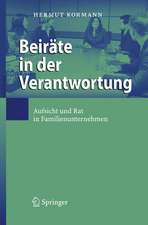The Economics of Social Insurance and Employee Benefits
Autor Richard J. Butleren Limba Engleză Paperback – 3 oct 2012
| Toate formatele și edițiile | Preț | Express |
|---|---|---|
| Paperback (1) | 947.67 lei 6-8 săpt. | |
| Springer Us – 3 oct 2012 | 947.67 lei 6-8 săpt. | |
| Hardback (1) | 955.40 lei 6-8 săpt. | |
| Springer Us – 29 sep 1999 | 955.40 lei 6-8 săpt. |
Preț: 947.67 lei
Preț vechi: 1155.69 lei
-18% Nou
Puncte Express: 1422
Preț estimativ în valută:
181.33€ • 189.84$ • 150.04£
181.33€ • 189.84$ • 150.04£
Carte tipărită la comandă
Livrare economică 05-19 aprilie
Preluare comenzi: 021 569.72.76
Specificații
ISBN-13: 9781461372356
ISBN-10: 1461372356
Pagini: 364
Ilustrații: XIII, 346 p.
Dimensiuni: 155 x 235 x 19 mm
Greutate: 0.51 kg
Ediția:Softcover reprint of the original 1st ed. 1999
Editura: Springer Us
Colecția Springer
Locul publicării:New York, NY, United States
ISBN-10: 1461372356
Pagini: 364
Ilustrații: XIII, 346 p.
Dimensiuni: 155 x 235 x 19 mm
Greutate: 0.51 kg
Ediția:Softcover reprint of the original 1st ed. 1999
Editura: Springer Us
Colecția Springer
Locul publicării:New York, NY, United States
Public țintă
ResearchDescriere
This book is intended for junior and senior undergraduate students, and master level students in human resources, risk management and insurance, industrial relations or public policy. The subject of the book is non-wage benefits paid to workers. Hence, it excludes discussion of needs-based programs such as welfare, food stamps, Supplementary Security Income, and Medicaid. It includes benefits mandated by the government including the major social insurance programs: workers' compensation, unemployment insurance and Social Security benefits. It also includes those benefits voluntarily provided by firms including: group medical care, disability benefits, paid sick time, pension benefits, life insurance, and assorted other fringe benefits. The book is divided into three parts. Part I (chapters 1 through 6) briefly introduces these programs and discusses some of the insurance and economic concepts that are useful in both evaluating the current programs, and in understanding what changes might mean for future costs and benefits. The next two parts of the book deal respectively with social insurance programs (Part II, chapters 7-10), and other employer provided benefits (Part III, chapters 11-16). Throughout, private sector human resource practice and public sector human resource policy is linked to various "ben~fit" models: the human capital model, the passive participant model, the insurance' model, the managed care model, and the integrated health benefits model.
Cuprins
Preface. Acknowledgements. Part I: Introduction and Economic Models. 1. Workers' Benefits and Models of Worker Behavior. 2. History of Workers' Benefits in the United States. 3. Health Benefits Costs: The Value of an Integrated Approach. 4. Human Capital. 5. Labor Supply Model Over Time: The Life Cycle Diagram. 6. Uncertainty Risk Aversion and the Demand for Insurance. Part II: Social Insurance. 7. Workers' Compensation. 8. Social Security Disability Insurance, ADA and Temporary Disability Insurance. 9. Unemployment Insurance. 10. Social Security: Retirement Medicare and Survivor Benefits. Part III: Employee Benefits. 11. Group Insurance: Regulation Taxation and Funding. 12. Medical and Dental Expense Benefits. 13. Disability: Short and Long Term Sick Leave and Long Term Care Insurance. 14. Group Life Insurance. 15. Retirement and Profit Sharing Plans. 16. Other Benefits. Appendix: Research Tools in Social Insurance and Employee Benefits. References. Index.



















